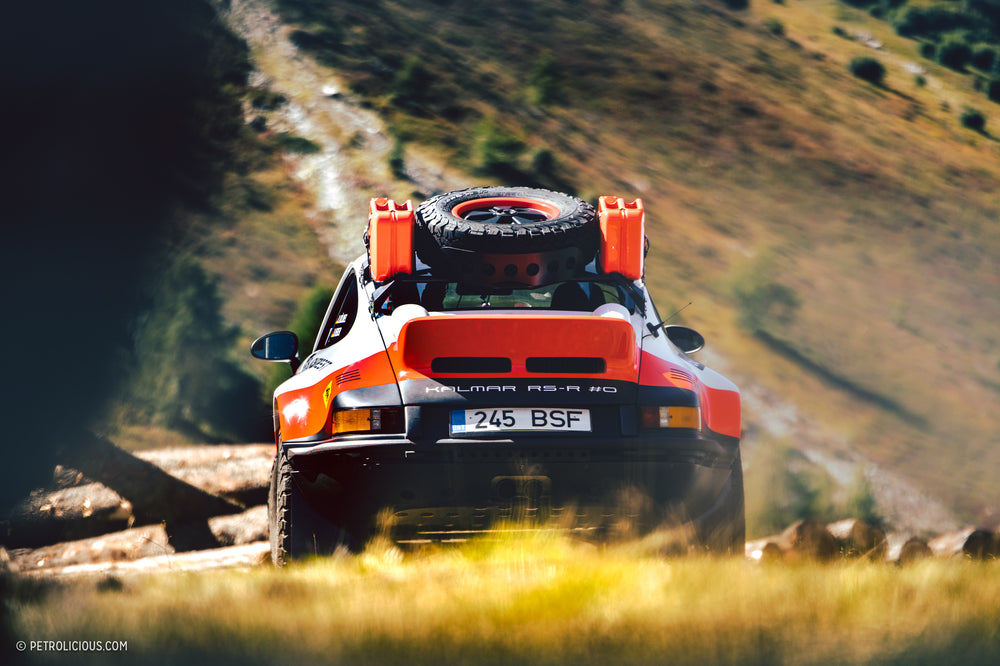In the infancy of the automobile, there was no greater feat for a car than its completion of a multi-country raid. The longer and more extravagant the route, the better. Think Peking to Paris, not a road trip on the interstate. What started as a test of a car’s reliability and its driver’s gumption morphed into something more exciting as the technological capacity and appetite for adventure grew.


Before long these raids were not just a question of going the literal distance, but about doing so at speed, and with style, conquering hostile terrain and extreme weather with a figurative middle finger held out to adversity. And as the concept of raids became increasingly competitive, famous iterations like the Paris-Dakar took the saga of country-crossing motorsport to a level of international acclaim, while somewhere in between the modern Baja and André Citroën’s epic pre-war adventures, the joy of a truly global trek led to the establishment of companies such as Kalmar Automotive.





While Jan Kalmar had already built a reputation of his own, his company was taken to another level after it started partnering with none other than fellow Dane, “Mr. Le Mans” himself, Tom Kristensen. This business relationship emerged in the most natural of ways, namely while Kalmar was developing a car for the nine-time Le Mans winner. Tom’s high standards pushed the team to improve their cars further than most, and his input inspired the creation of new models, each with another massive journey in mind.
Before getting into the specifics of this car, it’s worth taking a moment to acknowledge that there are still some restomods out there that are created for aggressive driving first and foremost, rather than leading a spot-free existence mostly relegated to the garage and Instagram. Some of the most expensive cars on the market are celebrated and priced for their lack of mileage rather than for the battle scars acquired while crossing sky-high mountain passes or fording rivers, but at some point they cease being cars and are more akin to speculative investments. This is not one of those cars.





The Kalmar RS-R is a full carbon fiber build, with flared arches and a reinforced chassis, flush-mounted Lexan windows, and a lifted suspension. The Rally Special Radical (RS-R) is a development of Kalmar’s standard Rally Special (RS) version, which was created in partnership with Kalmar’s sister companies Beyond Adventure and Spirit of Speed, who organize adventure drives tens of thousands of miles long. The RS-R is the even more spiced up overland-at-speed 911, pushing the envelope in terms of not just performance, but also the durability factor.





As with all Kalmar builds, the basis is a Porsche 911, in this instance a 964, although the RS-R can also be built on the 993 platform. The fit and finish is at the level of the best streetcars, but the intentions behind this build are made clear by the high-vis paint scheme, designed to be visible even through sandstorms, snowstorms, torrential rain, and all other manner of extreme weather. The livery also tells us that the first big challenge on its schedule is on the South American continent, where it will follow the Andes mountain range across Patagonia on a “drive” of some 12,000km. Off the beaten path, the row of powerful auxiliary lights, spare wheel, and the extra fuel stored in the exterior-mounted canisters will earn their keep, as these are not mere styling add-0ns, despite that often being the case for off-road builds that rarely make it out of the garage. That said, covering the steel bumpers in leather adds nothing to the car’s functionality, but it became a Kalmar tradition that doesn’t seem to be going away regardless of where the cars may be headed.





I caught up with the Kalmar RS-R a few weeks ago on what could be the most stylish of shakedowns up, down, and across the Swiss Alps en route to the Motorsport Rendezvous in St. Moritz. Observing the car on the Julier Pass, it is undoubtedly in sync with the environment, with all the aesthetics and abilities of a mountain climber. Winding through the ascending hairpins, the inherently dramatic scene of a sports car attacking a mountain is enhanced by the softer suspension on this 911, the car’s swaying motions telegraphing its driver’s inputs. Each instance of hard braking, cornering, and acceleration have a prominent impact on the posture of the RS-R, but for all its extra movement it never appears to be out of sorts.
After blasting across the pass, we stopped in the scenic village of Bivio to take a stationary look at the car, where, surrounded by the traditional Alpine architecture, the 911’s iconic lines are immediately at home. Under the hard shadows cast by the towering peaks and the peaked rooflines below them, the RS-R’s hyper bright livery reminds me of the glowing eyes of a cloaked predator patiently biding its time before doing what it was meant to.




The design is somewhat similar to the factory liveries with the deep red subbed out for the day-glo orange, which lends the very well-known shape something fresh but familiar. Between the playful coloring and the strapped-on spares, there’s a sort of general optimism to its appearance, a can-do and will-do attitude. It also reveals what seems to be an interesting synergy with mountaineering culture, the tradition of respecting the wild peaks while on the other hand always aiming to conquer the tallest and most treacherous—a combination of temerity and reverence towards their awesome environment that forever engrains the character of the people living in the Alps. I can’t think of a better way to also describe this Kalmar RS-R.


























































